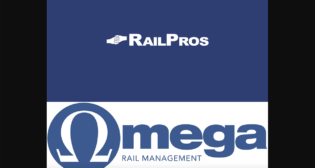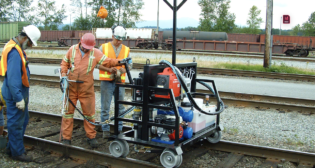
ASCE: Rail Infrastructure Gets Top Grade—B
Written by David C. Lester, Engineering Editor and Editor-in-Chief, Railway Track & StructuresThe American Society of Civil Engineers (ASCE) awarded U.S. freight and passenger railroads the highest grade—B—of its most recent quadrennial Infrastructure Report Card. That’s compared to an overall C–.
In reviewing the rail sector, ASCE cited sustained private investment by freight railroads as the primary reason for the network’s good condition. In the 40 years since partial deregulation under the Staggers Rail Act—1980 to 2020—privately owned U.S. freight railroads invested nearly $740 billion, averaging approximately $25 billion per year over the past five years, on capital expenditures and maintenance expenses related to right-of-way, bridges, tunnels and other infrastructure, and on equipment such as locomotives and railcars. Those investments break out to more than $260,000 spent on average per mile of the freight rail network.
However, ASCE’s scorecard noted that “despite freight and passenger rail being part of an integrated system, there remain stark differences in the challenges faced by the two rail categories.” For example, while some of Amtrak’s operations are hosted on well-maintained, privately funded freight rail infrastructure, the railroad has a $45.2 billion state-of-good-repair backlog on the Northeast Corridor (NEC) alone. Those infrastructure-related issues are the largest source of delays on the NEC. ASCE called for “significant, overdue investment in passenger rail infrastructure, particularly in high-population centers.”
“The nation’s 140,000-mile rail network is its healthiest ever thanks to $25 billion on average in annual private investments,” said AAR President and CEO Ian Jefferies. “The ultimate mark of success is how railroads safely, reliably and sustainably deliver for customers and communities day in and day out across the country. At the same time, ASCE’s report is an urgent reminder of the need for robust investment into the nation’s passenger rail lines, not to mention infrastructure more broadly.
“As policymakers work to address these persistent infrastructure challenges and advance other priorities, railroads stand as ready partners to craft well-designed, viable solutions that will keep our economy and nation moving forward. The right policies can ensure a healthy, multi-modal infrastructure network and secure the sustained investment necessary to raise the grade for the nation’s infrastructure.”



